Southern Africa - South Africa, Botswana, Zimbabwe, Zambia, Namibia
August 23 - September 15, 2016
Part Six, Page Four - Chobe National Park, Botswana
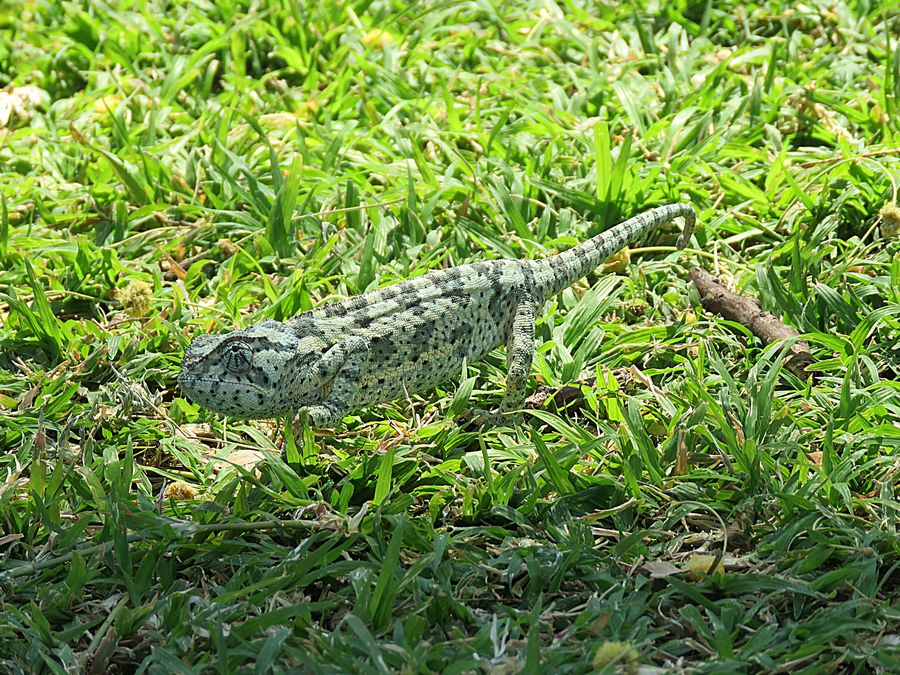
Flapnecked Chameleon - seen in the grass at Elephant
Valley Lodge. Has a rounded head and conical eyes.
Tail is often curled. Adults are usually green but are
able to change color to match foliage, bark, or soil.
It is active in the day. Catches flies and other insects with
a long sticky tongue.
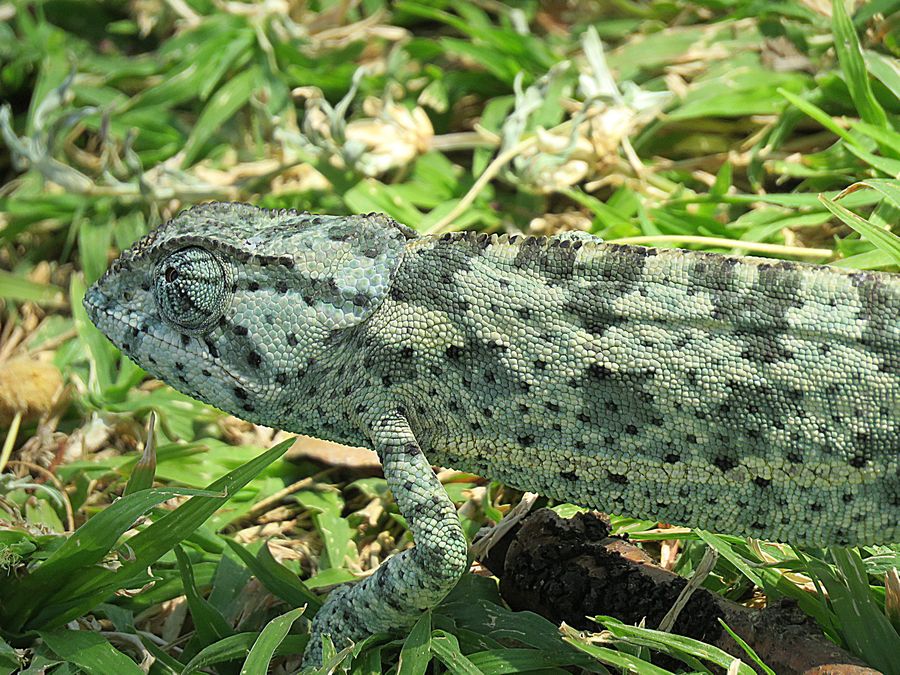
Notice in this picture and the following two how the position
of the eye shifts.
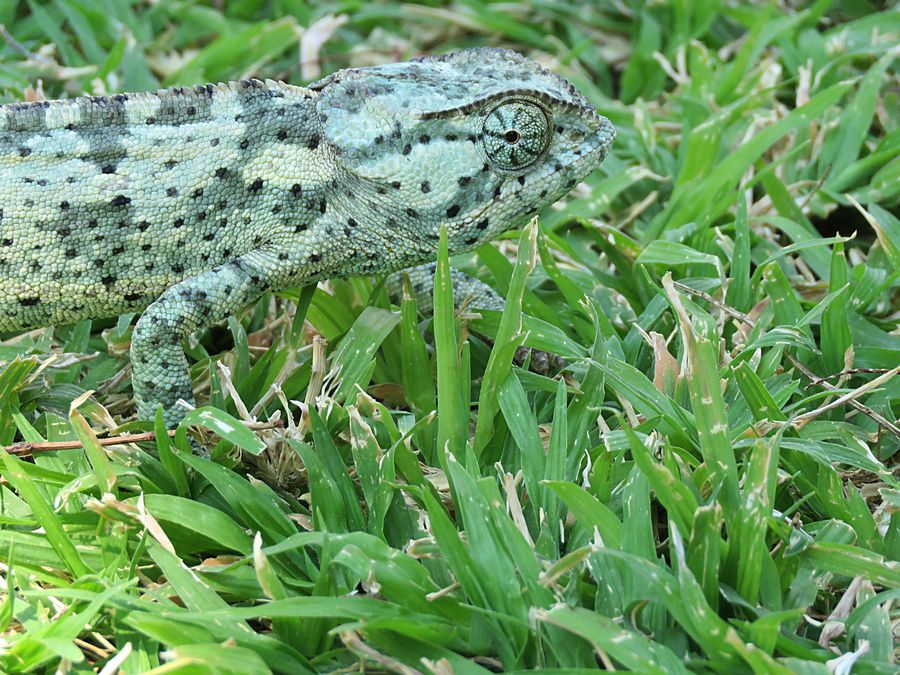
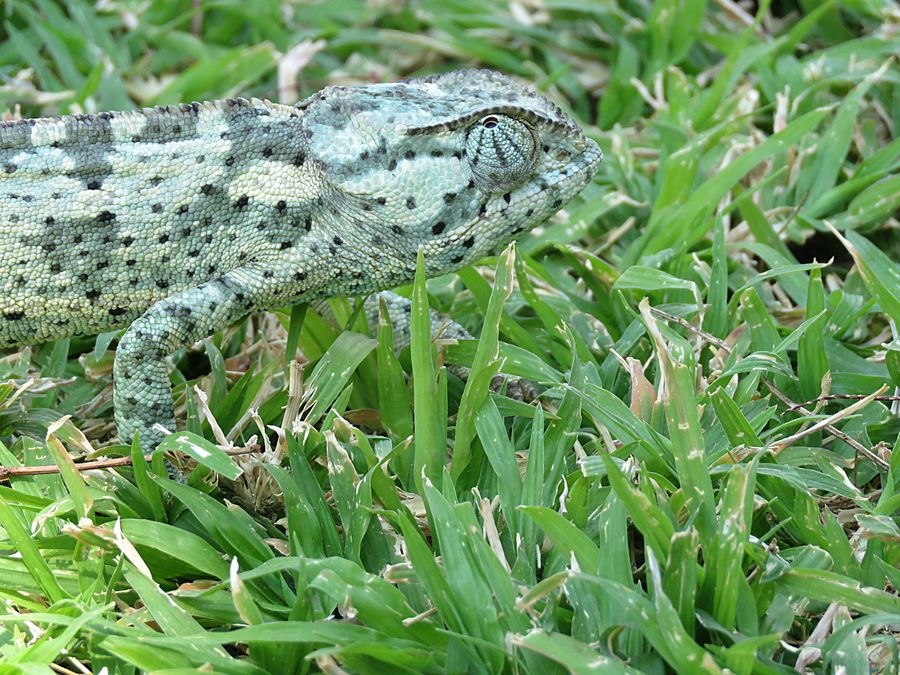

Male bushbuck drinking at the watering hole at the Lodge
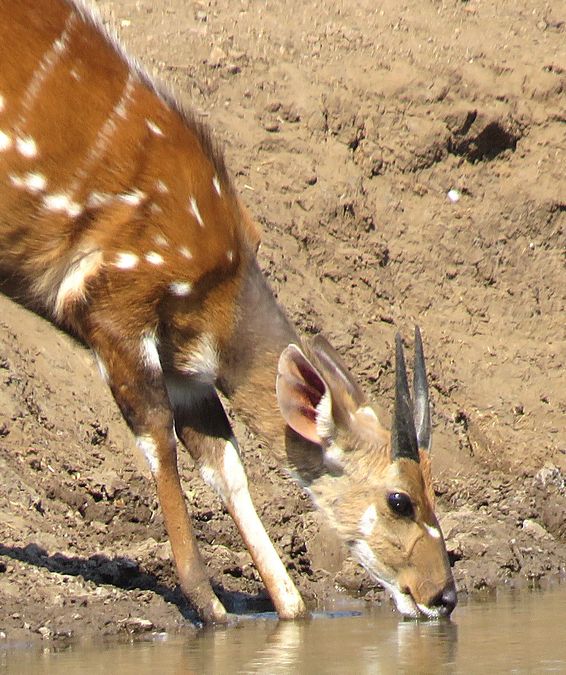
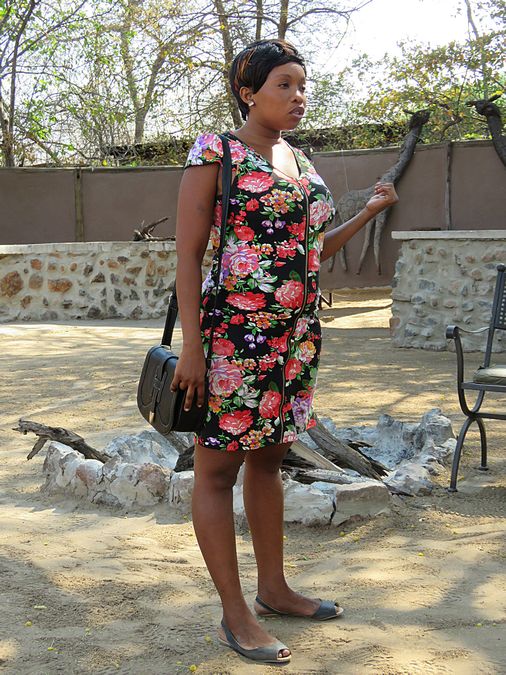
A young woman, a sex worker, who spoke to us at
the Lodge about how she got into the work. Her father
died in a car accident, and her mother died of cancer.
She had 2 younger siblings she had to raise.
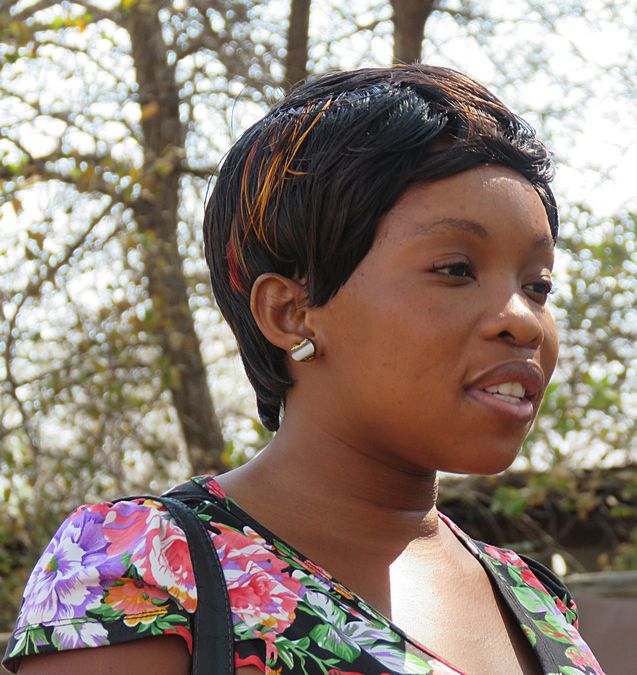
She acquired HIV. Prostitution is illegal in Botswana, so
she could not go to the Government for help even though
the police know about prostitution in the area and look the
other way. She is receiving medicine from a South African
nonprofit group.
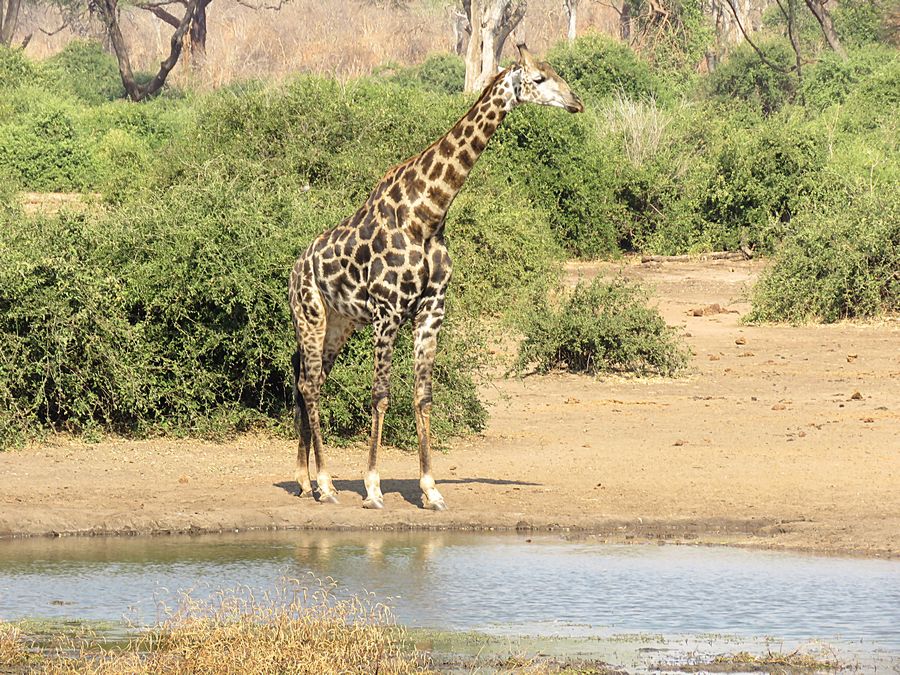
Giraffe at the watering hole looking around before taking a
drink.
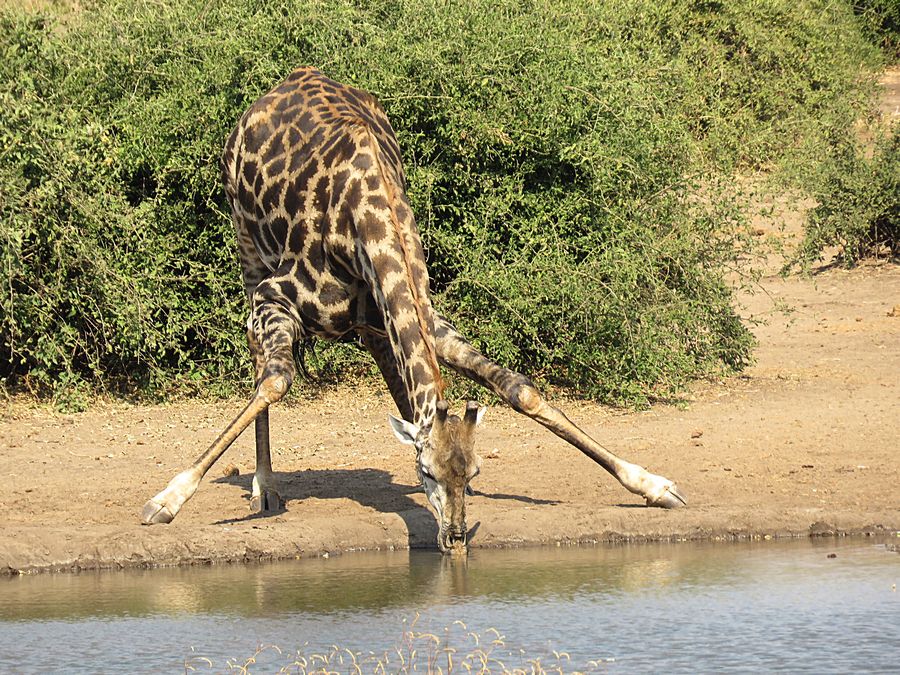
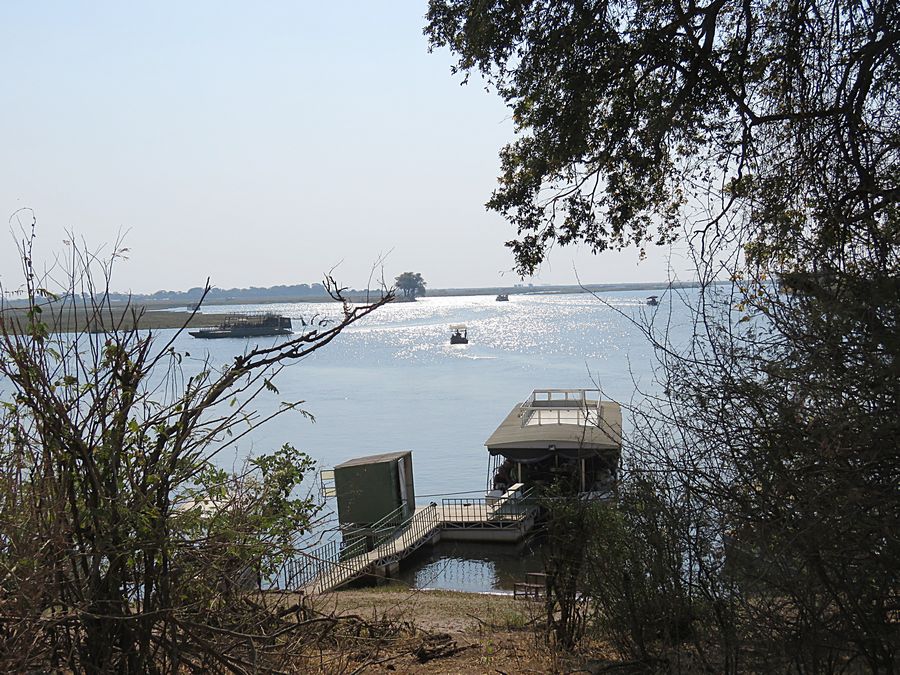
The last night at Chobe National Park, we took a boat ride
on the Chobe River.
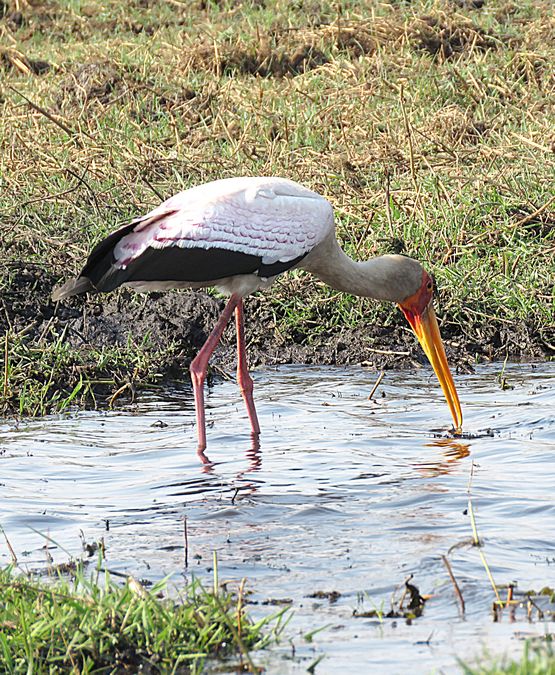
Yellow-billed Stork
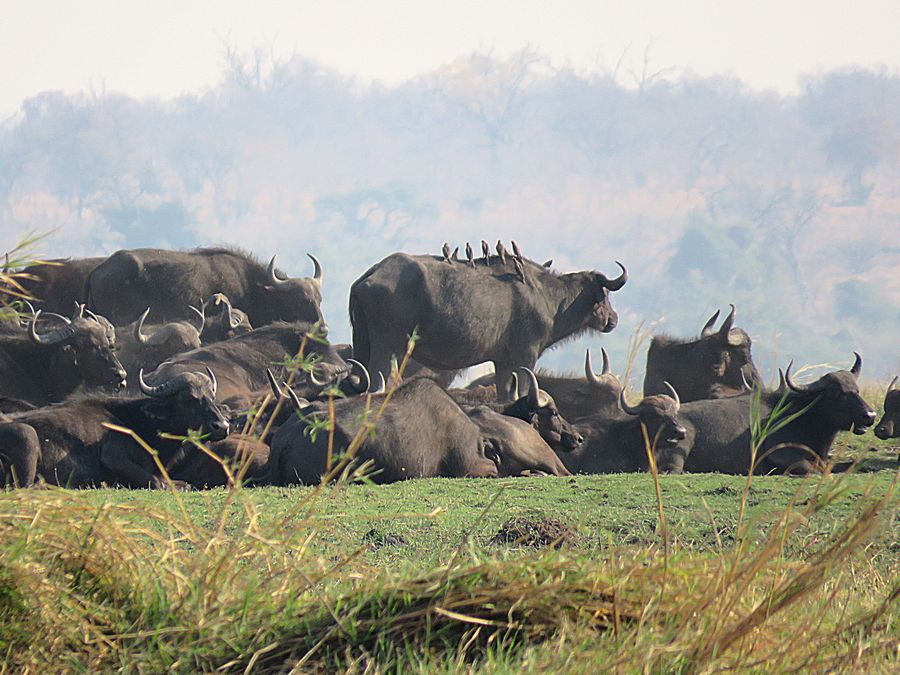
African Buffalo. Look at all the oxpeckers on the back of one
of them.
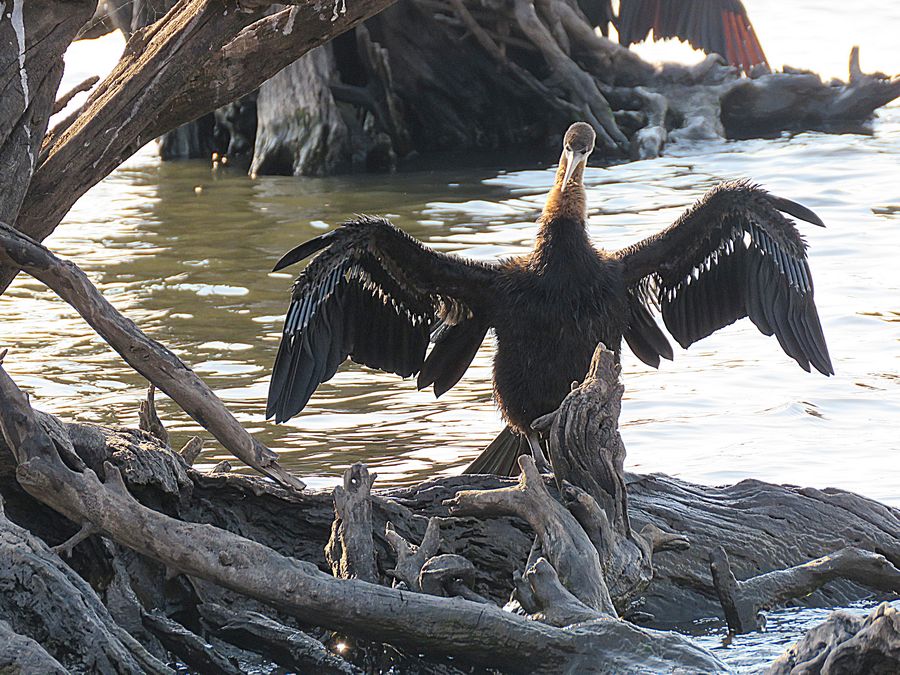
African Darter drying out its wings
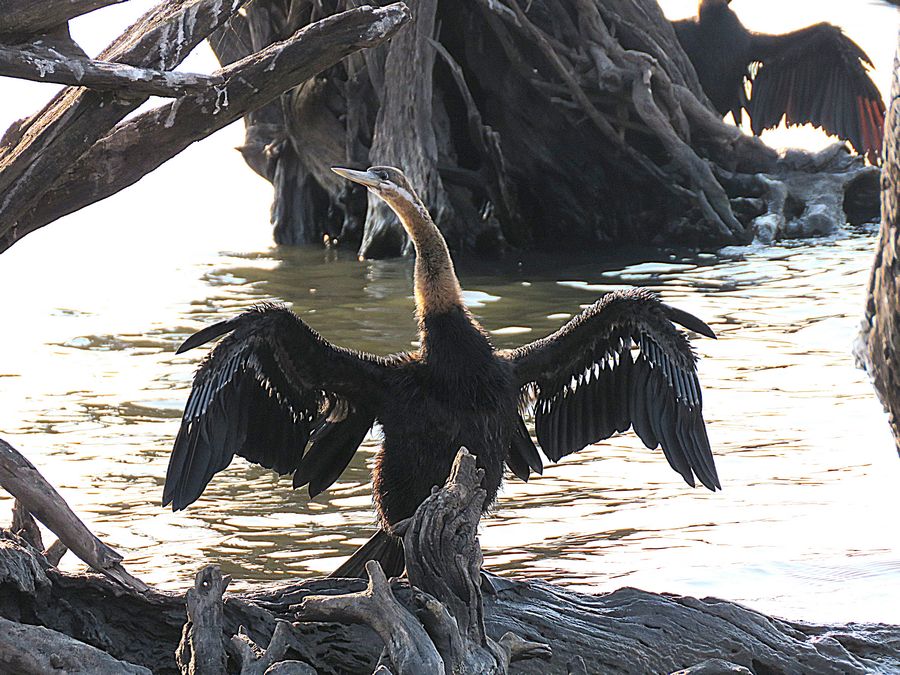
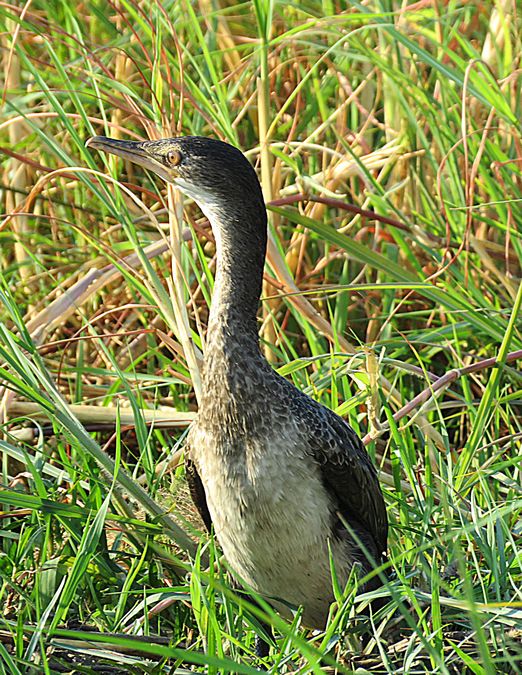
Reed Cormorant
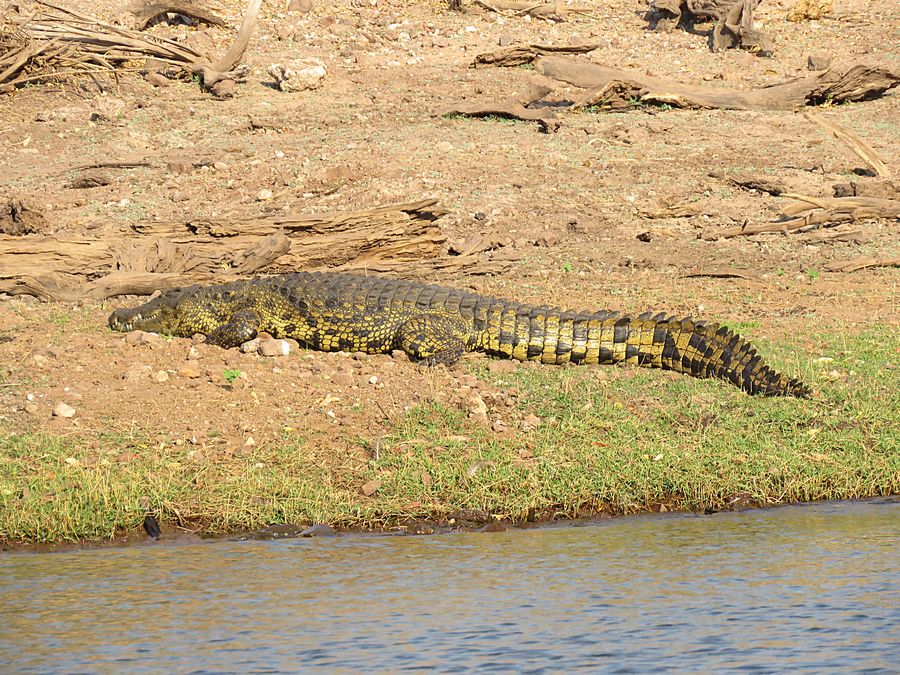
Crocodile along the shoreline
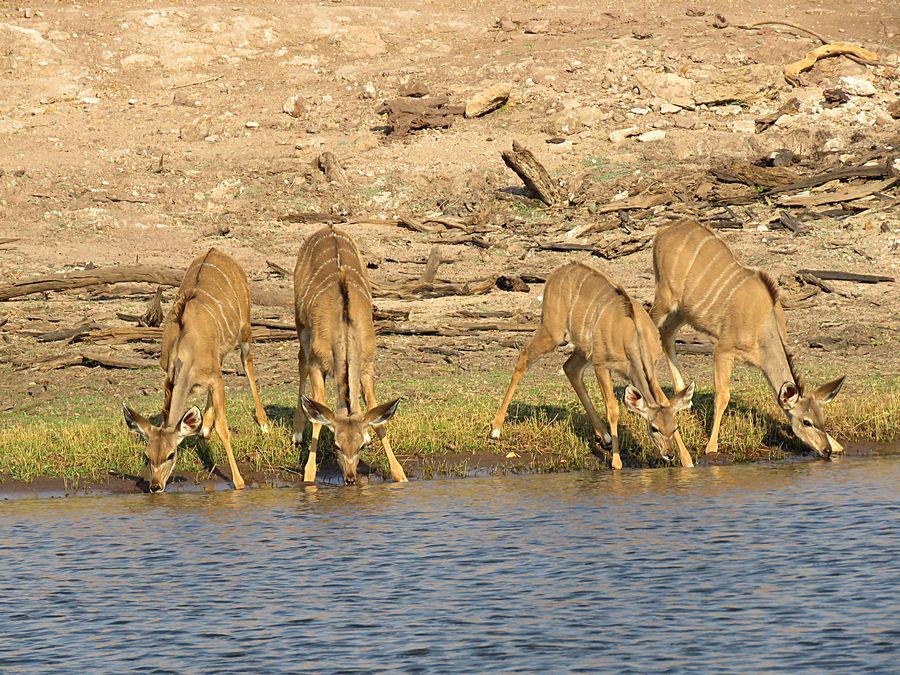
And a few yards away from the crocodile were female kudus
drinking from the river.
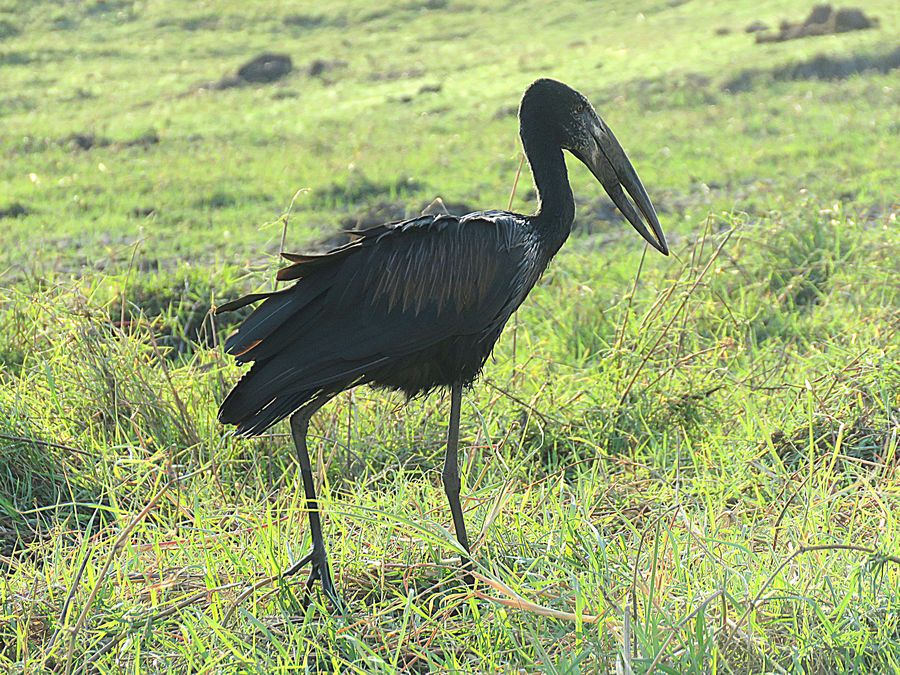
Open-billed Stork - dark, gray-black stork. Has a characteristic
gap near the tip of the pale bill that allows it to be used like
tweezers to extract fresh water mussels and snails from their
shell.
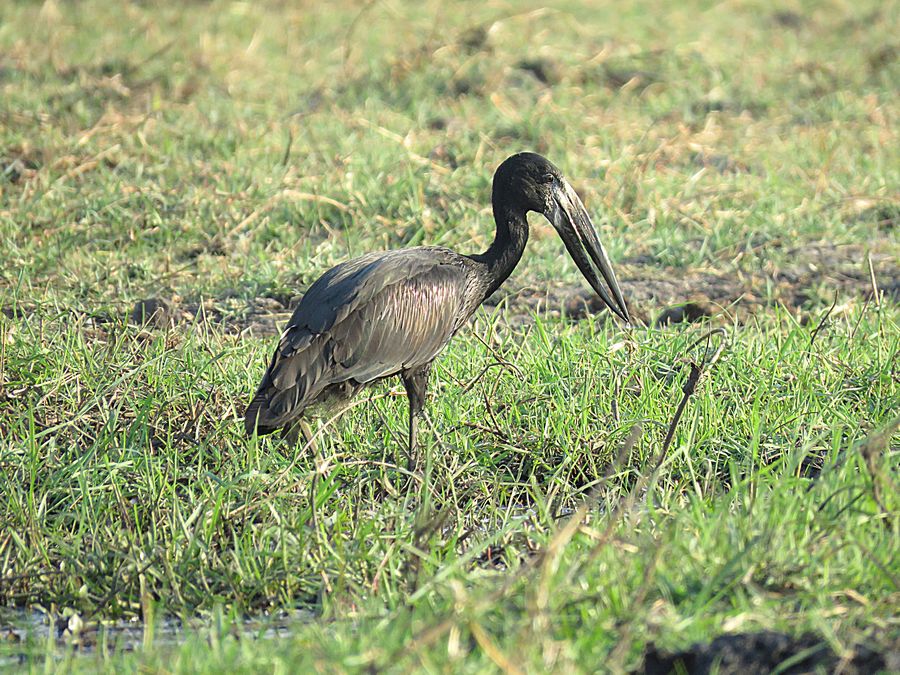
Often forages alone or in small groups but gregarious
at roosts and breeding colonies in trees.
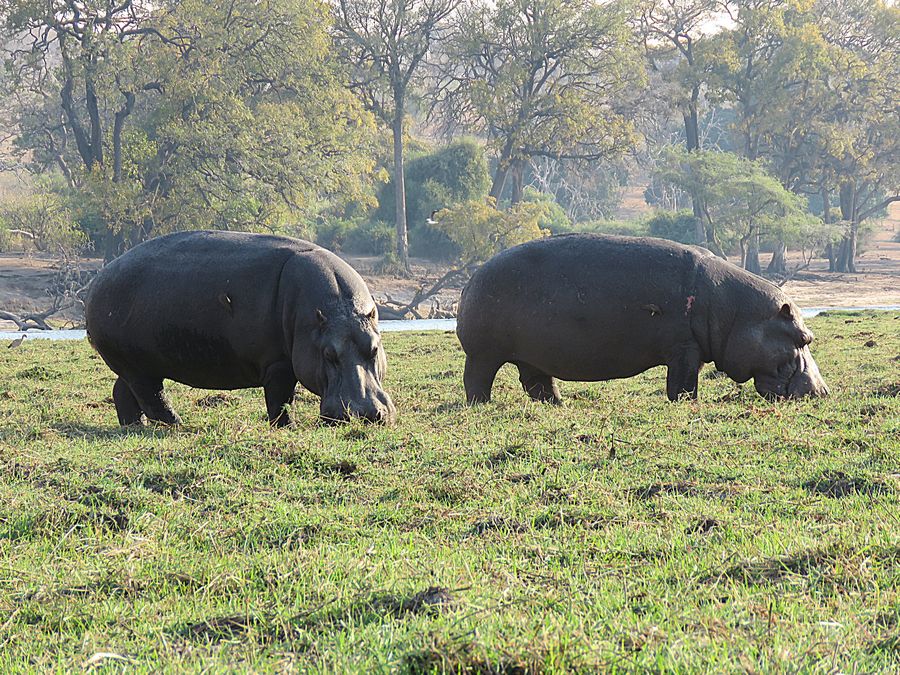
Two hippos grazing near the river.
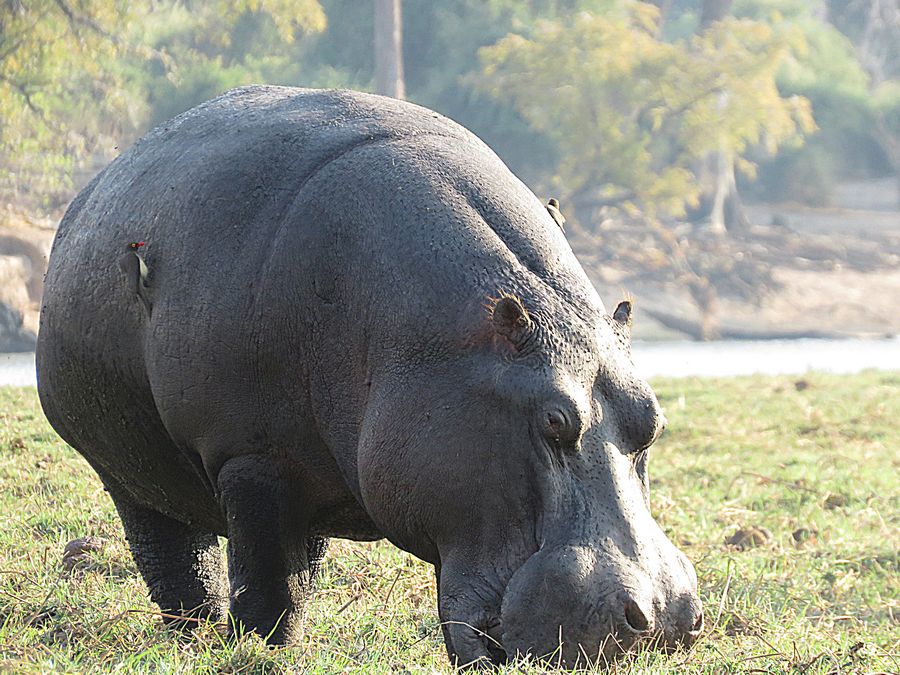
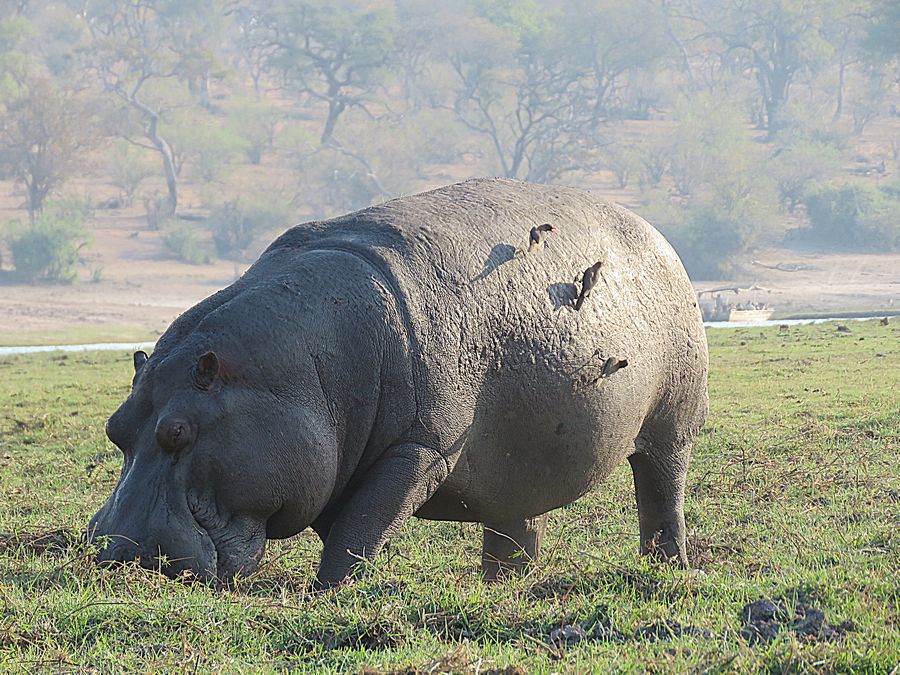
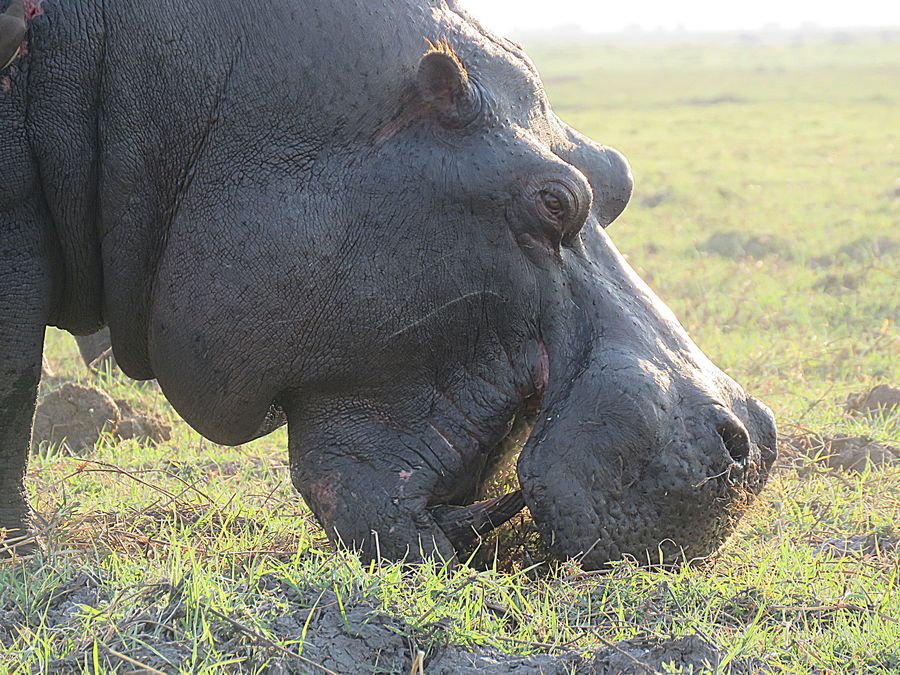
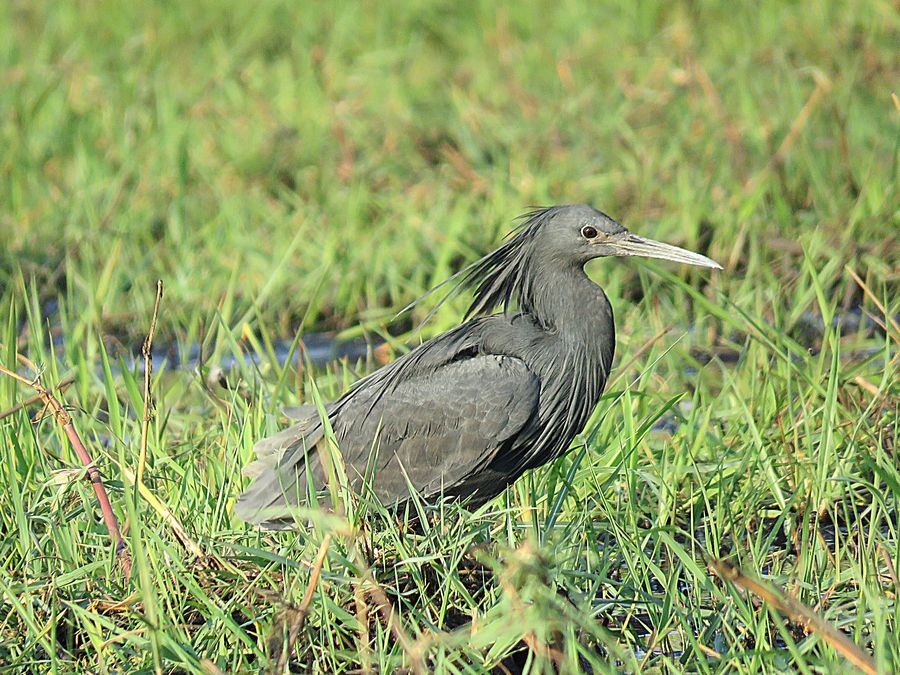
Black Egret - Has dark legs, yellow toes and dark eyes.
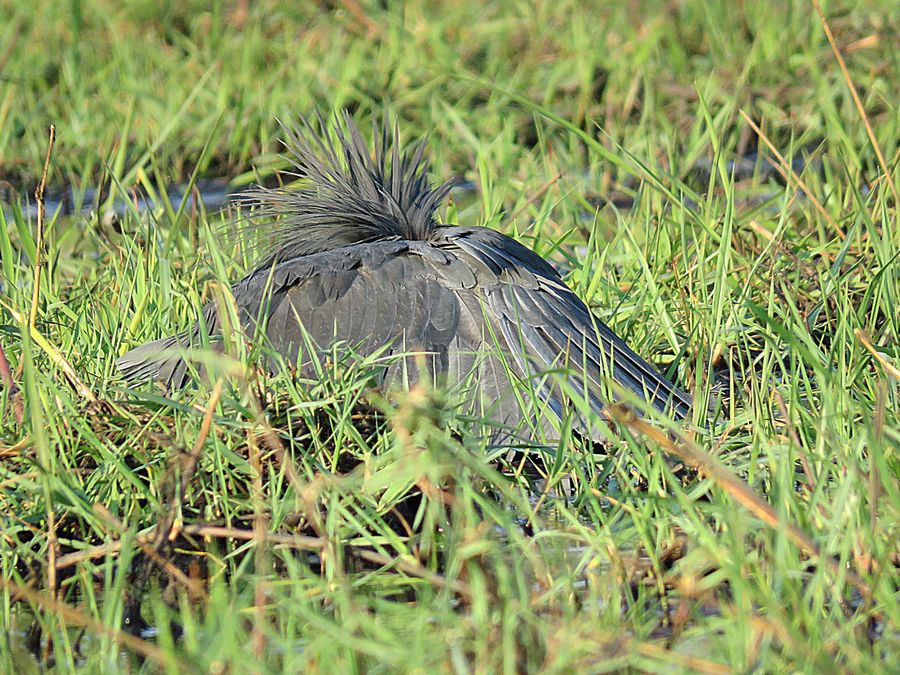
The feeding behavior of the black egret is unique. With
wings arched over the back to form an umbrella like dome,
this reduces glare on the surface of water and may attract
fish. Usually seen alone or with other wading birds.
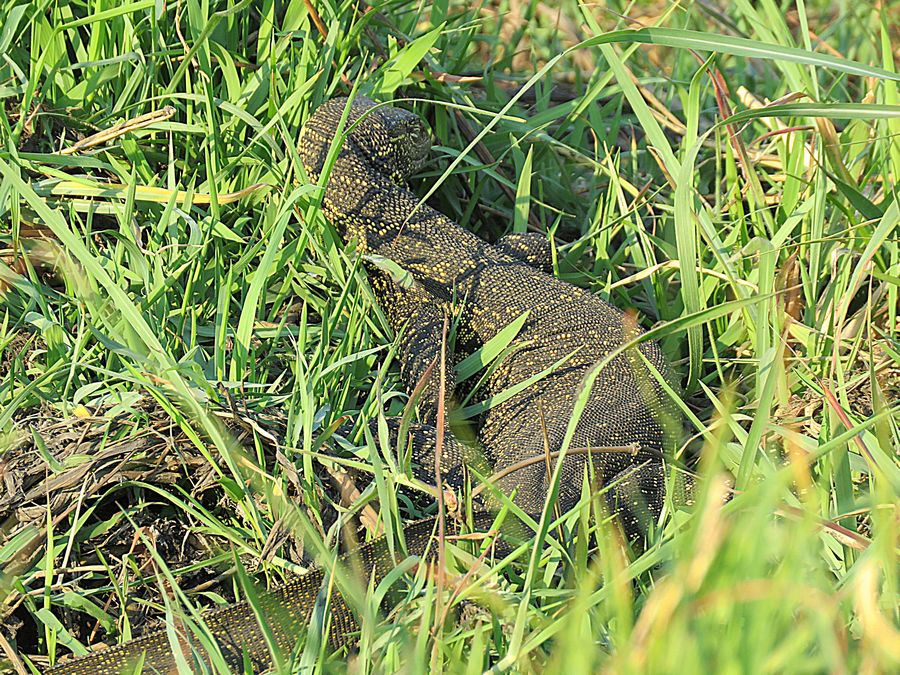
Water Monitor hiding in the grass near shoreline. We saw
several of these when we stayed on Impalila Island in
Namibia.
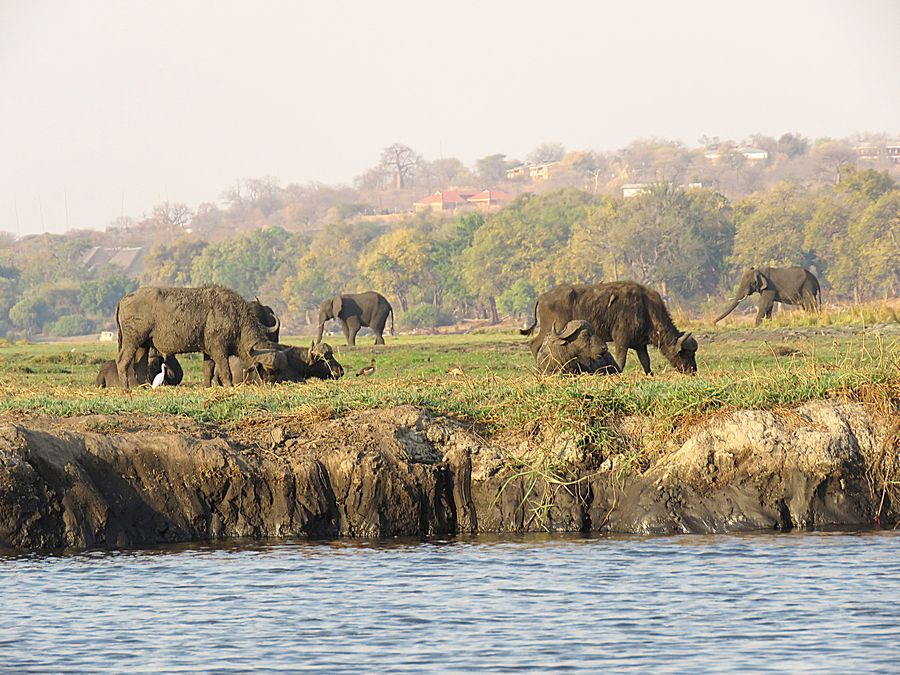
View from our motorboat of buffaloes grazing in the
foreground and elephants in the background.
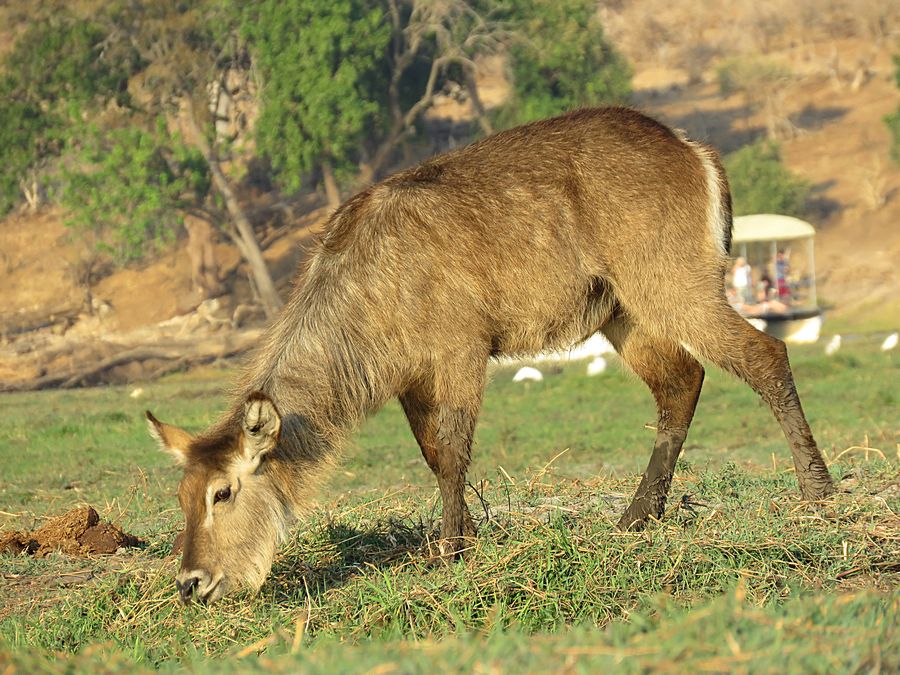
Common Waterbuck - a large antelope with brownish hair,
and the rump is distinctively marked with a broad white ring.
Only males have horns. They are typically near water.
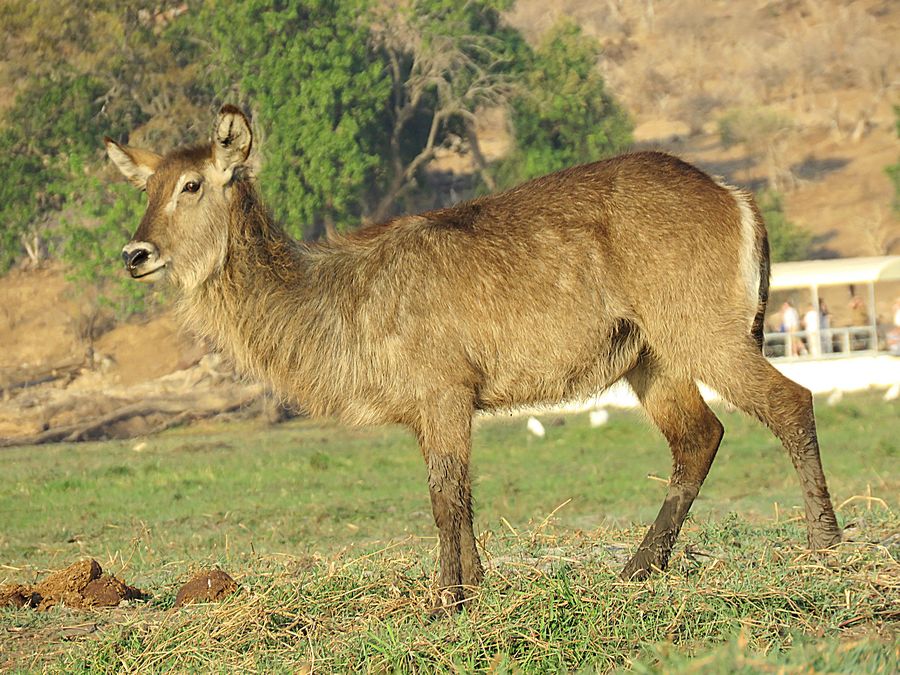
Territorial bulls rule over groups of females. Waterbucks graze on
floodplains or in open woodland.
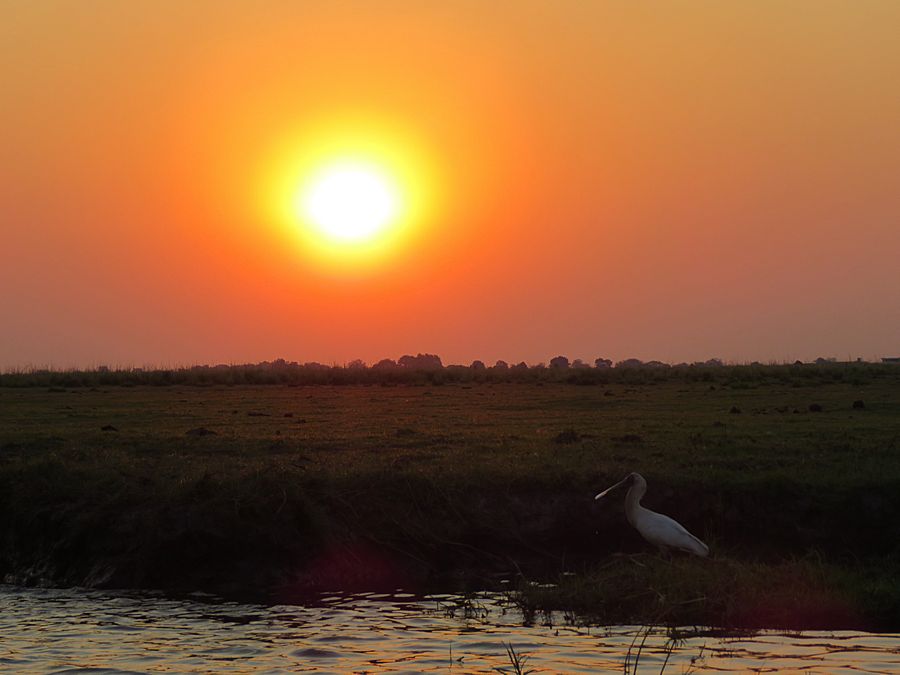
Sun setting - an African Spoonbill in the foreground
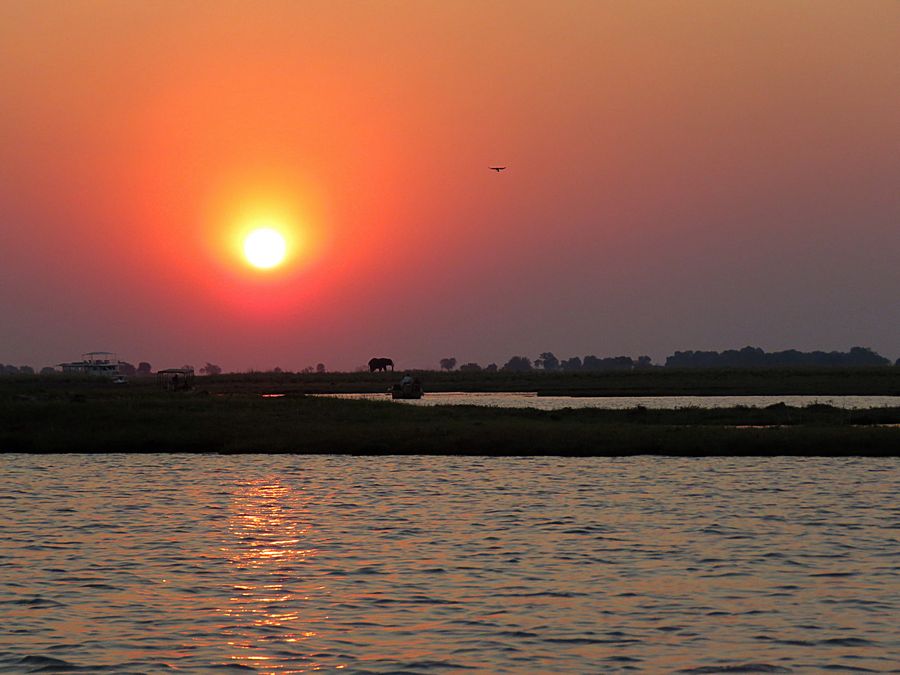
Sun setting over the Chobe River
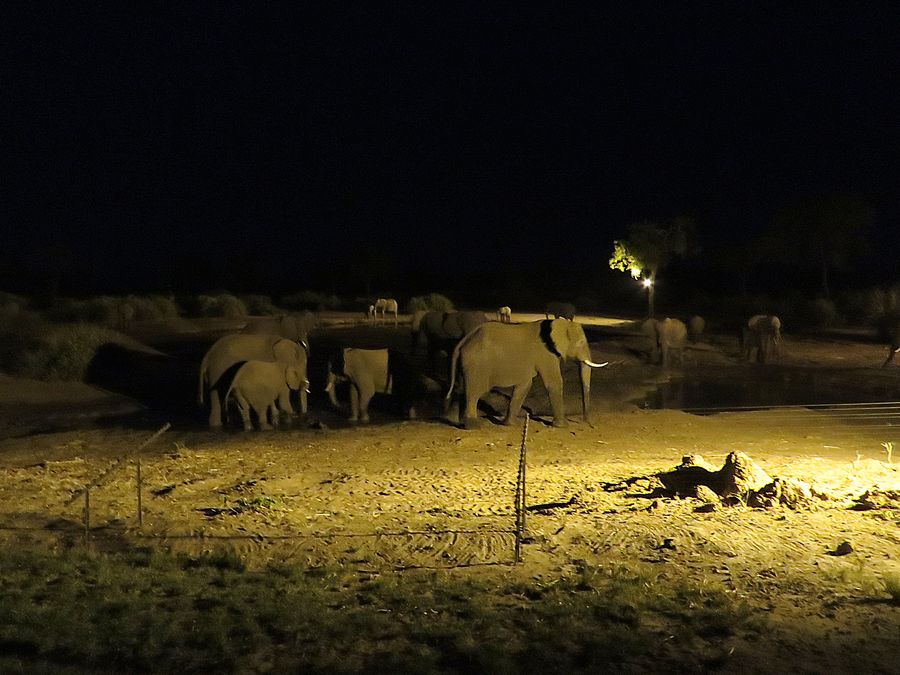
Final look at the elephants at the watering hole at the Lodge
before departing in the morning to Victoria Falls, Zimbabwe.
We flew from Victoria Falls to Johannesburg, where I took my
15 1/2 hour flight to Atlanta, then a few hours later flew home
to Denver.
THE END - SOUTHERN AFRICA
Link to Part One - Okavango Delta, Botswana
Link to Part Two - Kruger National Park, South Africa
Link to Part Three - Zambia and Hwange National Park, Zimbabwe
Link to Part Four - Victoria Falls, Zimbabwe
Link to Part Five - Impalila Island, Namibia
Pat's Home Page